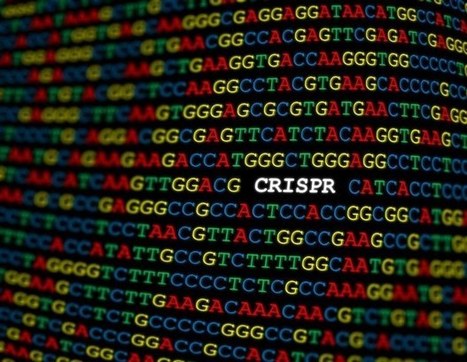Bacteria and the viruses that infect them are engaged in a molecular arms race as ancient as life itself. Evolution has equipped bacteria with an arsenal of immune enzymes, including CRISPR-Cas systems, that target and destroy viral DNA. But bacteria-killing viruses, also known as phages, have devised their own tools to help them outmaneuver even the most formidable of these bacterial defenses. Now, scientists at UC San Francisco and UC San Diego have discovered a remarkable new strategy that some phages employ to avoid becoming the next casualty of these DNA-dicing enzymes: after they infect bacteria, these phages construct an impenetrable "safe room" inside of their host, which protects vulnerable phage DNA from antiviral enzymes. This compartment, which resembles a cell nucleus, is the most effective CRISPR shield ever discovered in viruses. "In our experiments, these phages didn't succumb to any of the DNA-targeting CRISPR systems they were challenged with. This is the first time that anyone has found phages that exhibit this level of pan-CRISPR resistance," said Joseph Bondy-Denomy, PhD, assistant professor in the Department of Microbiology and Immunology at UCSF. Bondy-Denomy led the research team that made the discovery, which is detailed in a paper published Dec. 9, 2019 in the journal Nature.
The Hunt for DNA That CRISPR Can't Cut
To find CRISPR-resistant phages, the researchers selected viruses from five different phage families and used them to infect a common bacteria that had been genetically engineered to deploy four different Cas enzymes, the DNA-cutting component of CRISPR systems. These CRISPR-fortified bacteria emerged victorious against most of the phages they faced off against. But two jumbo phages -- so named because their genomes are five to 10 times larger than the genomes of the most well-studied phages -- were found to be impervious to all four CRISPR systems. The researchers decided to put these jumbo phages to the test and probe the limits of their CRISPR-resistance. They exposed them to bacteria outfitted with a completely different type of CRISPR, as well as bacteria equipped with restriction-modification systems -- a DNA-cleaving enzyme that's more common than CRISPR (restriction systems are found in about 90 percent of bacterial species, whereas as CRISPR is present in only about 40 percent) -- but which can only target a limited number of DNA sequences. The results were the same as before: petri dishes littered with the exploded remains of phage-infected bacteria. "It was really surprising because we engineered the bacteria to massively overproduce components of the immune system, but none of them could cut the phage DNA. These phages were resistant to all six bacterial immune systems tested. No other phage even comes close," said Bondy-Denomy.
Jumbo phages, it seemed, were virtually indestructible. But test tube experiments suggested otherwise -- jumbo phage DNA was, in fact, as vulnerable to CRISPR and restriction enzymes as any other DNA. The CRISPR resistance that was observed in phage-infected cells had to be the result of something the viruses were producing that interfered with CRISPR. But what?
Found: An Impenetrable CRISPR Shield
Microscope-based experiments finally revealed what was happening. When these jumbo phages infect bacteria, they build a spherical compartment in the middle of the host cell, which keeps antiviral enzymes at bay and provides a "safe room" for the viral genome to replicate. This compartment, it turns out, was identical to one first discovered in 2017 by UCSD Professor Joe Pogliano, PhD, and UCSF Professor David Agard, PhD, both of whom are co-authors of the new study. Though these researchers previously demonstrated that the phage genome replicated in this nucleus-like shell, nobody knew until now that the shell also serves as an impenetrable shield against CRISPR and other DNA-dicers....
Publisjed in Nature (09 December 2019):



 Your new post is loading...
Your new post is loading...







